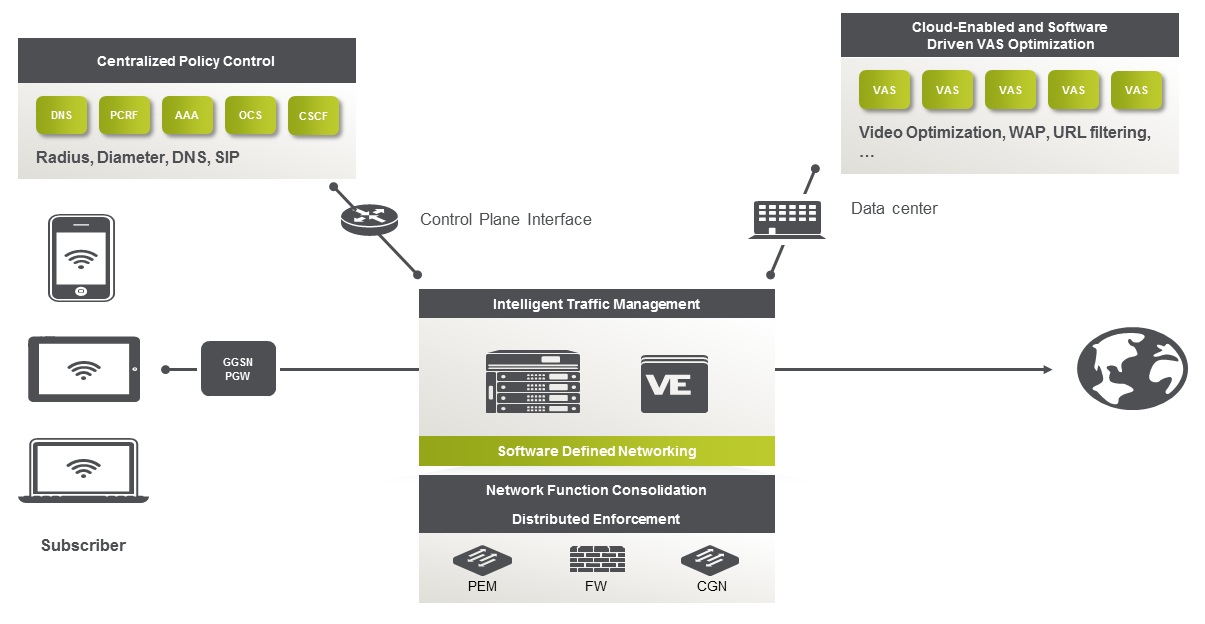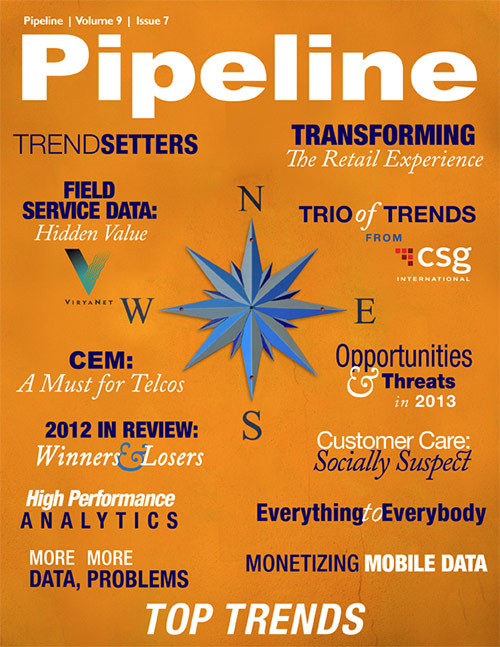Monetizing Your Data Traffic
Leveraging analytics
With detailed real-time analytics at the application layer, service providers can identify trends in customer usage patterns and apply dynamic pricing and promotions for their subscribers, leading to increased revenue and quality of experience (QoE). Service providers want a flexible, agile policy management infrastructure that allows them to introduce new services easily and rapidly in this evolving landscape (see Figure 2). The need to adapt quickly and add new services cannot interrupt existing operations; the service providers who are able to supply these premium services in a timely way and without disrupting their subscribers’ experience will come out ahead of their competition.

Figure 2. Flexible Policy Management Infrastructure Architecture
Rethinking data usage plans
The availability of unlimited data usage plans is going away. Instead, CSPs are implementing tiered service plans that cater more directly to subscribers’ actual data usage. For example, subscribers who occasionally use data networks to check email or do limited browsing will be satisfied with a less expensive plan that provides a smaller amount of data availability. However, subscribers who are heavy data users — downloading streaming video or using social-media applications and real-time communications tools — will opt for a more substantial data plan, leading to incremental revenue streams for the CSP in question. To implement this type of innovation, the policy management infrastructure must be able to track how and where subscribers are accessing the network and note how much and what kind of traffic they are using.
Once a CSP has implemented a data usage policy, it is able to look at the total data usage per subscriber and implement “fair usage” policies. It’s a fact that a small percentage of subscribers use a disproportionately large amount of a network’s available bandwidth. To prevent this from happening and to ensure that the rest of the subscriber base has equal access to the data network, service providers can implement policies that limit heavy data usage. This reduces overall network congestion and increases QoS for the majority of subscribers, leading to increased revenues through customer satisfaction and retention.
Another common problem that occurs is when customers receive bills that show excessive charges for data usage and other services such as roaming that they are unaware of, commonly referred to as “bill shock.” The policy management infrastructure makes it possible to gain greater insight into what services subscribers are using and how they are using them. With these advanced analytics, service providers can monitor when subscribers are exceeding their bandwidth consumption, as outlined in their service plan, and send real-time notifications to them. This provides a mechanism for the service provider to proactively reach out to subscribers and offer them a temporary or permanent upgrade in their data plan based on actual usage, resulting in the potential for increased average revenue per user (ARPU).
Features can be added to look at a customer’s data usage over time and apply the results to his or her service plan. Providing options for customers will help service providers create new revenue streams, and one way CSPs can realize this is by implementing a “turbo-button.” When network conditions and usage patterns are appropriate, the subscriber is given a real-time option to increase his or her individual network performance through the increase of the available subscriber data rate, the prioritization of his or her traffic via QoS or the processing of the traffic through a premium service such as a video optimization system. To deliver this type of service CSPs must have the ability in real time to identify traffic conditions and the type of data a user is sending and then negotiate or change the user’s policy, steering traffic appropriately through policy management.



















